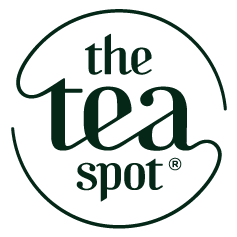By Shayna Harris for Forbes

E-commerce is growing as never before for tea since the onset of shelter-in-place in the U.S. “We have seen a huge spike in home tea consumption via grocery and online outlets. Our customers with a well-established online presence are doing exceedingly well,” says Mo Sardella, director of marketing at the G.S Haly Tea Company. Sardella’s customers saw between a 100% to 300% increase in online sales in April alone.
Bianca Shah, CEO of International Tea Importers, agrees. “We’ve seen that of course brick and mortar location sales are down, but many of our customers’ online sales have shot up as much as 150% from months prior to the start of COVID-19. It’s interesting to see this, at the same time it’s a bit worrisome for those customers who have not, for lack of better words, embraced technology over the years.”
Brewed tea, a $52 billion global market, is the second most widely consumed beverage in the world after water. Specialty and herbal teas had been experiencing strong year on year growth in recent years, riding general health trends in the United States. Specialty tea represents 20% of the US market, according to the Tea Association of the U.S.A. Prior to COVID-19, online tea sales were forecasted to be the fastest growing channel in tea, and the trend has accelerated in recent months.
“We have experienced a significant uptick in our direct-to-consumer business, as all online businesses have seen in this time of shelter-at-home,” says Maria Uspenski, CEO of The Tea Spot. “On top of that, I do think the tea and wellness industries have experienced an additional increase due to the fact that tea is a relatively affordable beverage that both supports health and promotes calm, which are things we are all craving at this time. On this note, we have seen a disproportionate increase in green tea sales, pu'erh teas, and functional herbal teas, such as teas to promote good sleep.”
As the velocity of e-commerce sales increases during shelter-in-place, much remains to be seen. Some in the tea industry wonder if this is just a short term bump in specialty tea sales, with consumers downgrading to commodity grade tea if the crisis continues.
“People are spending now, while stimulus and unemployment checks are still coming in, but what awaits us in the fall and for holiday 2020 can’t possibly be pretty. The saving grace of being in the tea industry is that we have a product that’s perceived as healthy, immune-boosting, stress-relieving, and is still very affordable per serving, even at the premium end,” Uspenski tells me. “Even with the silver lining of being in a somewhat recession-proof niche, it’s very difficult to forecast which formats and types of teas to produce.”
Online retail was up 68% in April year-over-year 2020 compared to the same period in 2019. If specialty tea purveyors can succeed in capturing a new audience, or their existing consumers in a deeper way, perhaps the tea industry will experience the renaissance of third wave coffee.
Sardella hopes so. “I have been really impressed by how adaptive a lot of the tea industry is. Many of my customers have been able to create online infrastructures, and quickly. There is also an opportunity for a conversation to really take hold for consumers with a more captive audience. I am optimistic, which is hard to say in times of distress. The tea industry has always struggled with identity, between commodity and specialty tea. This is an opportunity for tea people to understand what their purpose is. We have a good opportunity to rebuild.”
